Last weekend, seasoned marathoner and triathlete Enrico Varella – who is an 18-time Ironman finisher and has a marathoner personal best of 3 hours 16 minutes and 49 seconds, gave a talk at a Young NTUC Earth Runners’ Running Clinic.
Enrico shared with runners at the talk, tips about running less… to run faster. Here are some of the main highlights of his talk.
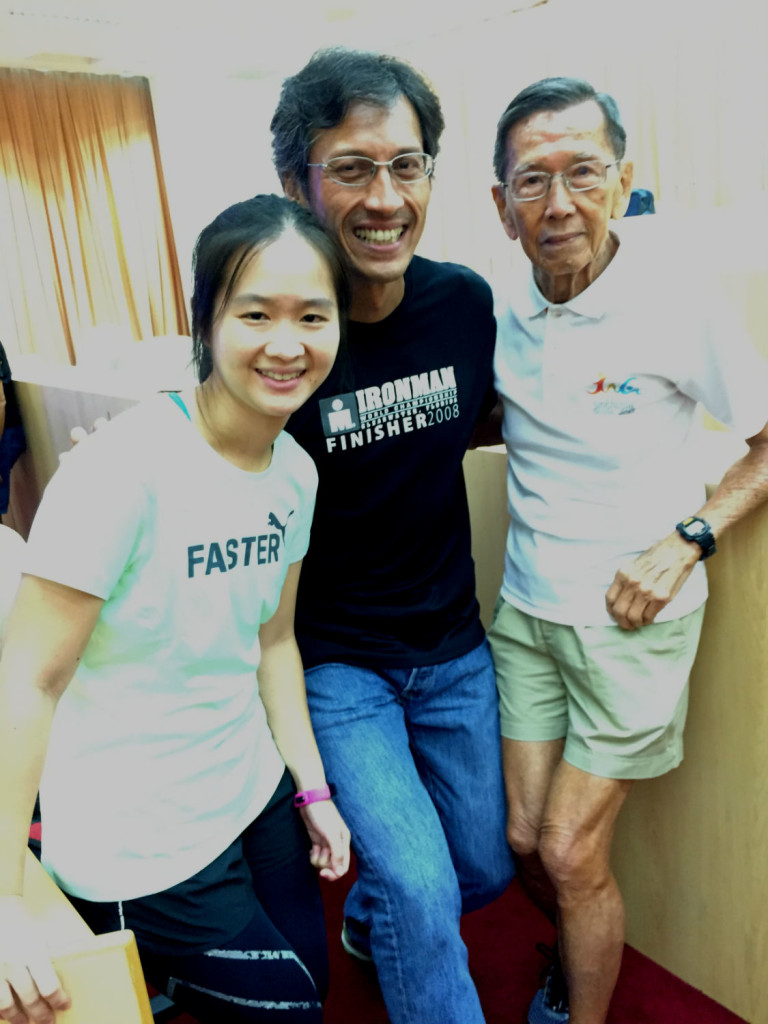
With Enrico Varella (centre) and Uncle Kor Hong Fatt (right). Enrico is highly inspired by Uncle Kor – a marathoner who is in his eighties
DID NOT ALWAYS START AS A RUNNER
An Eurasian Singaporean, Enrico did not start out being a runner. In fact, he picked up running seriously, quite late in his life. For instance, in his secondary school days, he had even come in last, in a cross country race. And in his early 20s, he was also a national bodybuilder representing Singapore.
He picked up running only in his late 30s. Said Enrico, “I almost died when I was trying to run my first 10km, and I went home halfway.” However despite the difficulties, he persevered with his running, and went on to do complete his first Ironman at the age of 39 years old.
He has never looked back since then, and today he has successfully qualified for, and completed the prestigious Boston Marathon in the United States, as well as the Kona Ironman in Hawaii. Enrico has also represented Singapore at the Ironman 70.3 World Championships in 2008 and 2009.
CONSISTENT TRAINING AND GOOD RECOVERY
In general, Enrico credits his improvements in sports to plenty of consistent training, in addition to eating natural fruits and employing good recovery methods and having adequate rest.
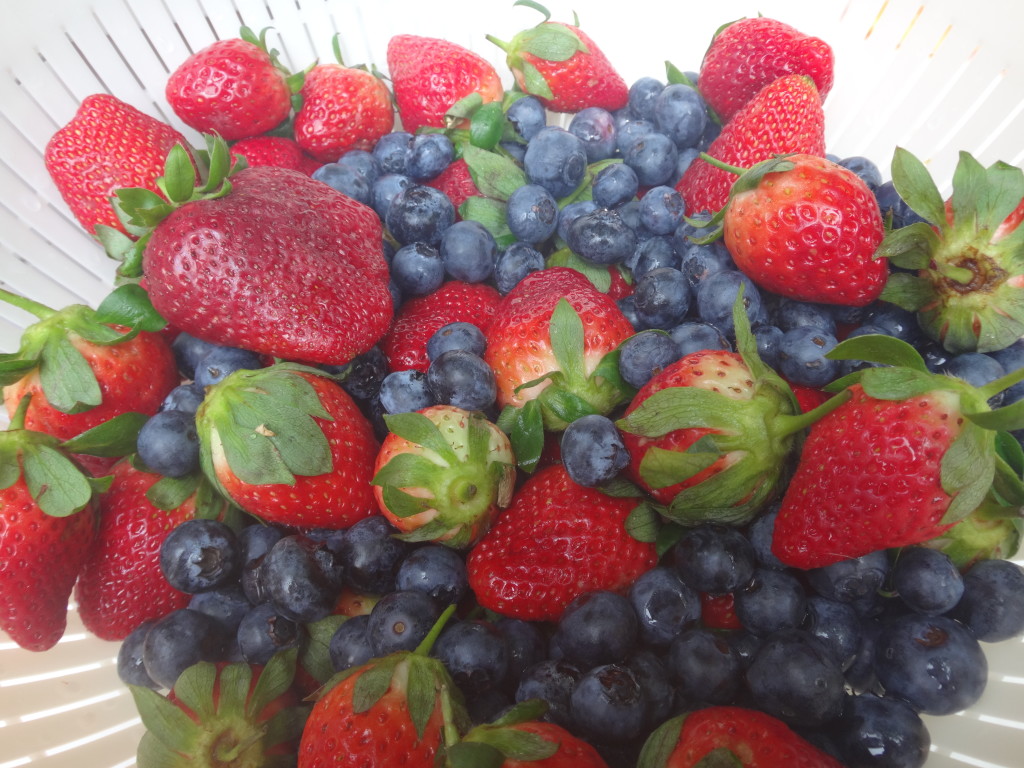
Enrico recommends eating plenty of natural fruits.
Said Enrico, “If you are new to running, your potential to improve is good. If you are a slow runner, you can get faster but if you are already fast, then your gains are a lot smaller. You still have to train consistently though, to improve.”
But no matter how much is your potential to get better, Enrico added that you will slow down once you hit your 50s, and will no longer be able to reach your body’s full peak potential as an athlete.
Nutrition
According to Enrico, carbs are not the key ingredient for runners and simply loading up on nothing but carbs may not be the best form of fuel for runners. Instead he recommended that runners should take a mixture of carbs, fats and proteins in order to reach their maximum potential. Fats would be essential fats, such as those found in peanut butter, almond butter, as well as Omega-3 found in deep-sea fish like salmon. For proteins, these include those from natural sources or whey proteins.
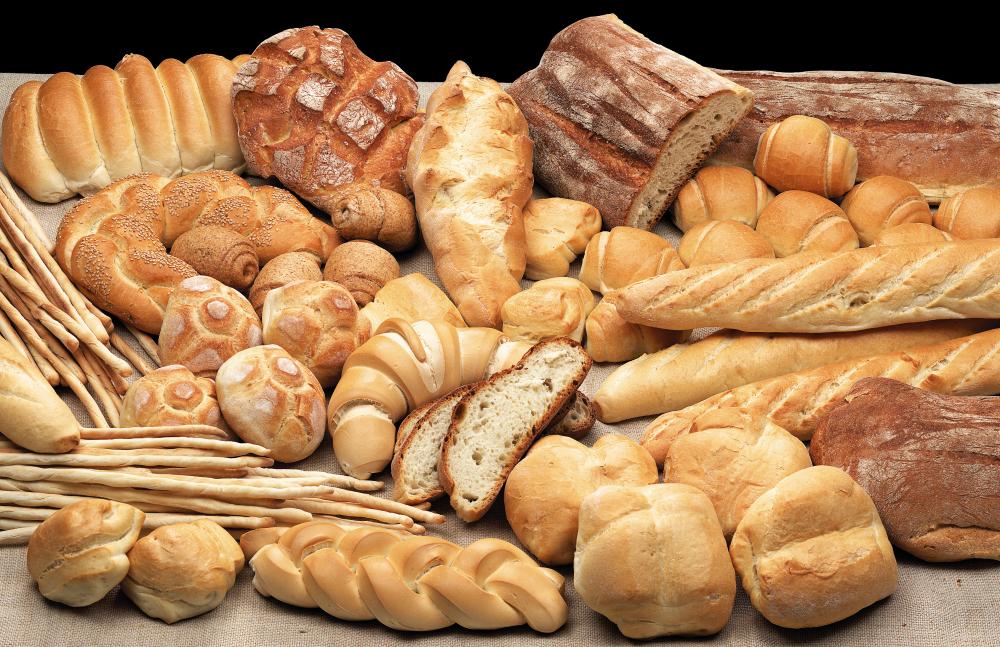
Carbs are not the only foods that runners should focus on eating.
Photo by: roguehealthandfitness.com
Enrico also recommended taking coconut oils, and vouches that two teaspoons of coconut oil in his morning coffee can give him enough energy to run two hours or cycle for three hours – without fuelling himself with any other gels or nutritional supplements along the way.
Antioxidants are also important for runners and triathletes – to reduce their muscle soreness after a hard exercise session. In fact, Enrico added that after a marathon, if he takes foods high in antioxidants, it will reduce his muscle soreness by more than 50 per cent, and he will be able to walk easily the day after the marathon, as a result. These can be found in deep-sea krill, pomegranates, berries, and practically anything natural that stains your clothes.
As well, exposing your skin to sunlight for about 20 minutes per day is good, because it helps to build Vitamin D in the skin and this as a result, reduces depression. Enrico advised against using sunblock, as he considers the chemicals used in it, to be poisonous.
Running Stride and Posture
For running strides, Enrico recommended running with a mid-foot stride that is like scraping your feet from the ground. He added, “I like to lower my legs but I do not lift then up. Sometimes I may appear to have a heel strike in my running photos though, but this isn’t accurate because my foot rolls and does not strike the ground.”
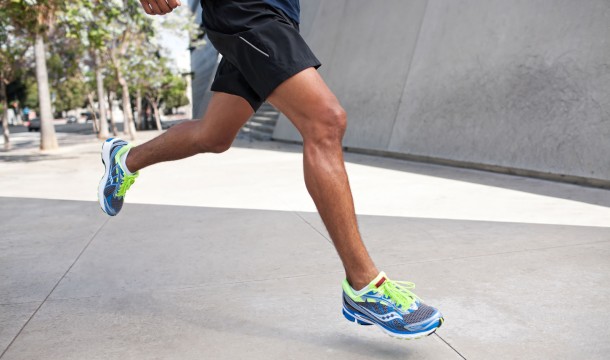
When you run, watch your stride.
Photo by: grabworthy.pricegrabber.com
For minimalist shoes, Enrico added that these are fine, but he does not recommend barefoot running. Said Enrico, “You have to train your body to run barefoot – some people prefer to run barefoot but for others, it will not suit them. If you have an injury-free history though, then keep to what you are doing as that is a sign that you are doing the right thing. However, I have not seen elite runners who are barefoot. The top runners in the world all wear shoes.”
Also, Enrico suggested that with so many freelance photographers voluntarily taking photos of runners for free, using these to diagnose any inconsistencies or errors in your running gait will be good, so that you can get stronger. He said, “I use my gait in my running photos as a guide. The real patterns and inconsistencies come out when the body is tired, for example, you may slouch.”
Running Training
Enrico suggested that in order to get faster in your running without adding miles, is also to do hard workouts. He said, “If you want to run faster, it will hurt. But you should get familiar with discomfort. That is what hard training is all about. However, you should not train hard all the time – instead, push it when your body is able to, in order to build the fitness to last. Go as hard as you can, for as long as you can. That is the purpose of training.”
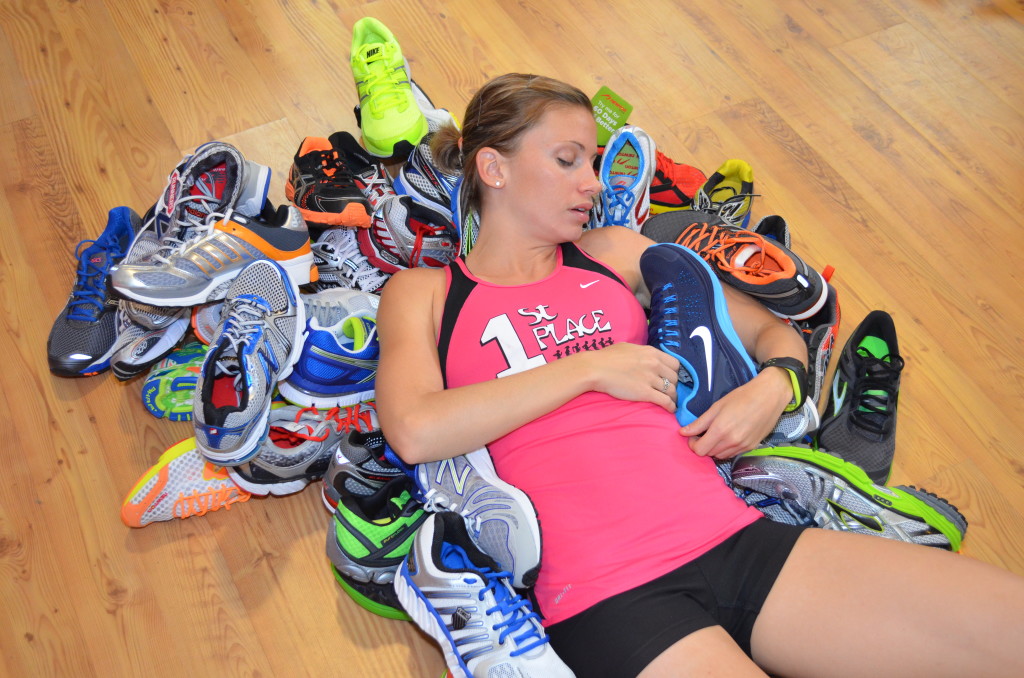
Run hard during training, but listen to your body at the same time.
Photo by: www.904fitness.com
However, if you are feeling faint or dizzy during a hard session or even a race though, Enrico advised runners to listen to their bodies and to stop immediately. This is because listening to your body should take precedence no matter what. He added, “Even if it is a race, if you don’t feel well, then walk. As long as your body is moving, it is okay. Momentum can still be maintained if your heart is pumping.”
Other Training
But besides simply running, he also said that you should add some gym work, tempo sessions and running drills to increase your cadence and improve your running physiology though, regardless of your running style – in order to get faster and stronger as a runner.
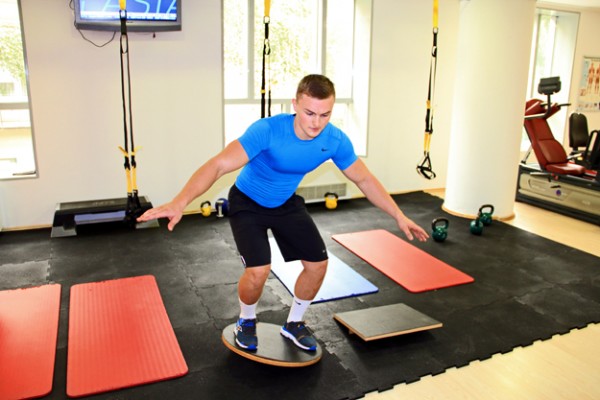
Working out on a balance board is good, according to Enrico.
Photo by: www.muradcentar.com.hr
Enrico also suggested that you should invest in a balance board and work out with this on a daily basis. This is especially so for trail runners, who will need strong ankles, knees and hips for balancing on uneven terrains. To use this balance board, you simply try and balance on it, without letting the edge of the board touch the floor – perhaps whilst doing everyday things such as watching television or brushing your teeth. He added that this is a good exercise for conditioning and to determine where your running weaknesses lie.
As well, he said that Kettle Bell training is good, in terms of strength and core development. Strong core muscles are important for endurance runners because they will help to keep you going when the rest of your body is feeling fatigued during a long running event.
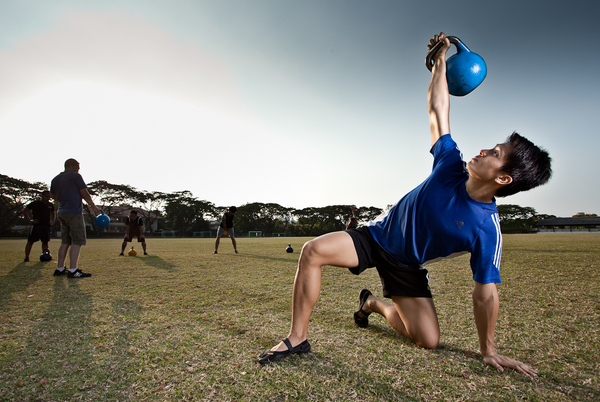
Kettle Bell training is also good for runners, says Enrico.
Photo by: www.behance.net
Added Enrico, “If you get injured regularly, you will have to examine your running technique and have a full muscle skeletal assessment to look for joint instability, range of motion and strength. A healthy and strong body makes you a better runner.”

Leave a Comment